If you have a garden, you know that it can be a beautiful and relaxing oasis in the middle of your yard. However, if you also have voles, then that oasis can quickly turn into a nightmare. Voles are small rodents that can do serious damage to your plants and flowers. This blog post will discuss some tips for keeping voles out of your garden so that you can enjoy it without fear of being destroyed by these little creatures!
What are voles?
Voles are small rodents that belong to the family Cricetidae. The most common species of vole in North America is the meadow vole (Microtus pennsylvanicus). Voles can be found throughout Europe, Asia, and North America, inhabiting grasslands, forests, wetlands, and agricultural fields. They range in size from 4–8 inches in length and have a short lifespan of one to two years.
Voles feed on a wide variety of plant material including roots, stems, seeds, and fruits. They also consume insects and small mammals when available. In addition to their diet, voles construct underground burrows which provide them with protection from predators as well as shelter during cold weather. These burrows often damage the roots of plants, leading to extensive destruction in agricultural fields.
In addition to causing damage to crops, voles can also spread diseases including hantavirus pulmonary syndrome (HPS) which is caused by a virus carried in their urine and feces. To prevent an infestation of voles, it is important to remove debris and vegetation from around your property that may provide shelter for them. Additionally, properly maintaining food sources such as gardens can reduce the likelihood of an infestation.
Voles can be a nuisance to farmers and gardeners alike, but with the proper precautions, their presence can be controlled. With knowledge about vole behavior and ecology, landowners can better manage them and protect their land from damage. Additionally, understanding how voles interact with other species can help you better understand how ecosystems function as a whole [1].
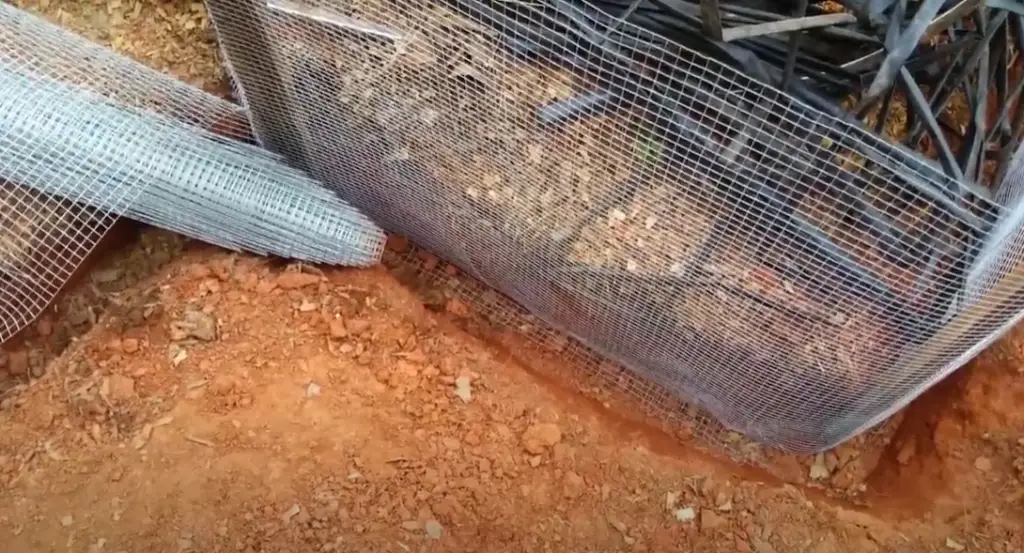
Signs of voles in the garden
Voles can be found in gardens, fields, and lawns. They like to live close to their food source which is mainly grasses and plant material. Voles are active year-round but they are most active in the spring and fall when temperatures are milder.
Signs of voles in your garden include shallow burrows (2-3 inches deep) that lead to mounds of dirt or gravel near plants or trees. You may find droppings or vole runways, which are trails of crushed vegetation made from the rodents running along them. Voles also feed on young shoots, destroying plants and eating bulbs. If you notice patches of chewed grass surrounding a plant, it could indicate vole activity. Voles can also cause damage to fruit trees, shrubs, and perennial flower beds. Damage includes girdling or partial removal of bark, chewed or gnawed leaves, stems, and flowers [2].
How to naturally and safely control voles in your backyard?
Keep your ground clear
The most important step in controlling voles is to keep your backyard free of clutter. Keep grass and vegetation short and trim, remove piles of leaves and debris, and get rid of any burrows that the voles may have dug. This will make it more difficult for them to hide or build new tunnels.
Fencing
Installing an underground fence can be effective in keeping voles out of your yard. It should be buried 8-12 inches deep around the perimeter of your property and extend at least 6 inches above the ground to prevent voles from burrowing underneath.
Try container planting
Container planting can make it more difficult for voles to access your plants. Choose containers with metal or plastic liners and fill them with potting soil. Make sure the container is big enough for your plant’s roots and that there are no holes that voles could use to get in.
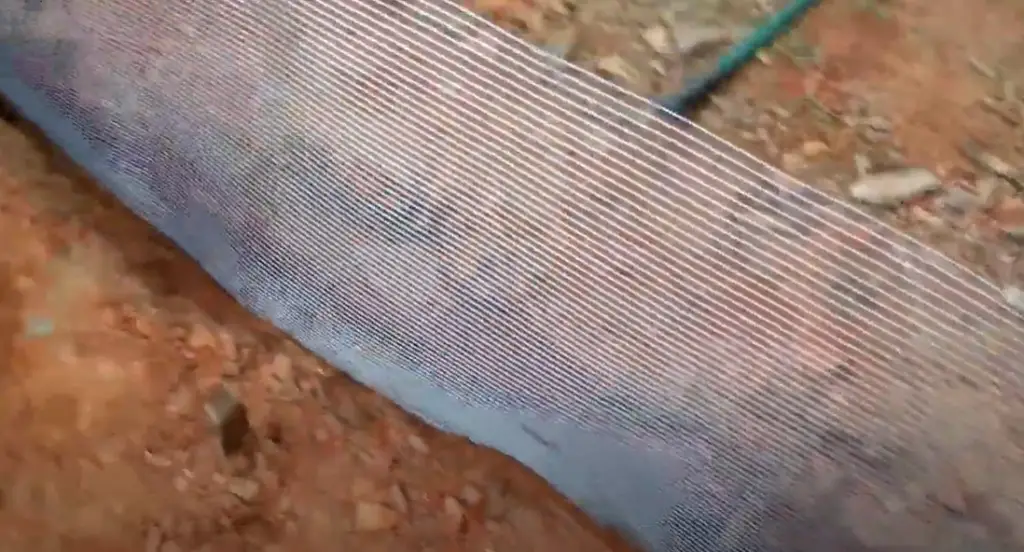
Let natural predators do the work
Several animals prey on voles, such as owls, hawks, snakes, and cats. Encouraging these predators to stay in your yard is a natural way to control the vole population. Domestic cats can be effective in controlling voles, but you should make sure that your cat is well-fed and does not become a nuisance to other animals.
Set out bait traps
If the above methods are not enough, you can set out bait traps to catch voles. Be sure to follow all safety precautions when using these traps as they can be dangerous for children and pets. There are several types of bait traps available, so be sure to research which one will work best for your situation.
Use rodenticides
Rodenticides are chemicals used to kill rodents, including voles. They come in both liquid and solid forms and should only be used if other methods have failed. Make sure to read the label carefully before using any rodenticide and follow all safety instructions. Additionally, it is important to note that rodenticides can be harmful to other animals, so use them with caution.
Use bulb baskets and tree guards
Bulb baskets and tree guards can be used to protect your plants from voles. Bulb baskets are containers made of wire mesh designed to fit over the roots of bulbs and keep them safe from vole damage. Tree guards are also made of wire mesh and wrap around the trunk of a tree, preventing voles from climbing up or burrowing beneath it.
Put predator urine around your yard
Voles have an excellent sense of smell, so using predator urine as a deterrent can help to keep them away. You can buy predator urine at most garden stores or online. Spread it around the perimeter of your property or near any areas where you think voles may be active. The scent will signal to the voles that danger is nearby and they will likely stay away.
Mix in a bit of gravel
Voles don’t like to dig through gravel, so adding a bit of it around your plants or in areas where voles are active may help deter them. Just make sure the gravel isn’t too large as this could cause damage to your plant’s roots.
Try out some deterrent sprays
There are several commercial sprays available that can be used to deter voles. They typically contain an unpleasant scent or taste that the voles will avoid. You may need to apply these sprays multiple times to keep the voles away.
Replace mulch
If you have mulch around your plants, this could be providing a welcome home for voles. Consider replacing the mulch with something less attractive like stones or gravel which will make it harder for the voles to hide and burrow in your yard.
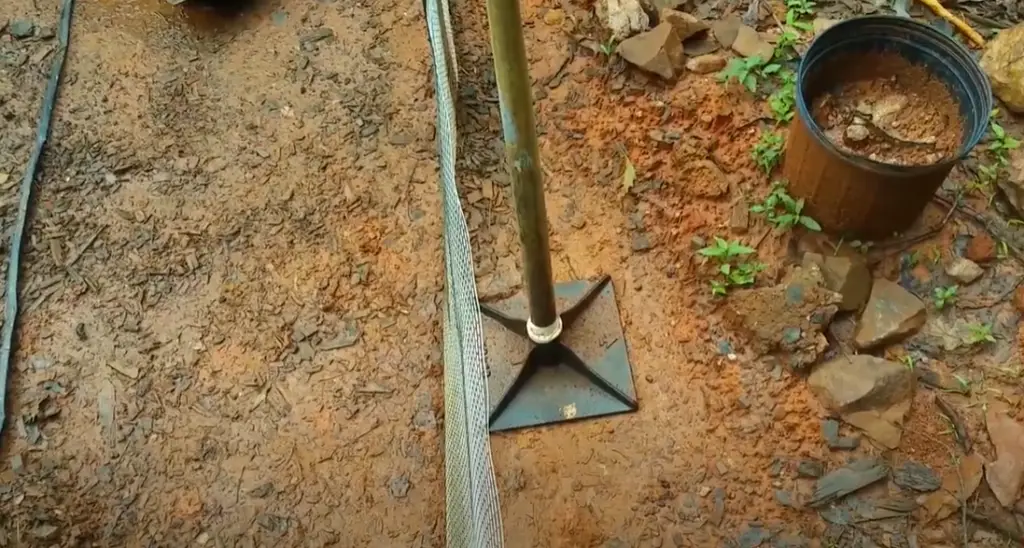
Plant some alliums
Alliums such as garlic, onions, and chives contain strong odors that voles don’t like. Plant some around the perimeter of your property or in areas where voles might be active to help keep them away.
Deter vole activity with noise
Voles are sensitive to loud noises, so try placing some wind chimes or other noise-making devices around your yard. The sound will scare off any voles that may be lurking nearby. Among these noise-making devices are ultrasonic repellers, but be aware that the effectiveness of these devices is still up for debate.
Remove possible hideouts
Voles love to hide in tall grass and other vegetation, so it’s important to keep your yard mowed and trimmed regularly. This will help remove any hiding places for voles and make your yard less attractive to them. Additionally, pay attention to areas with plenty of leaf litter or debris as voles can use this as a source of food and shelter.
Reinforce plantings with wire mesh
If you have plants that are particularly vulnerable to vole damage, one way to protect them is by wrapping the stems with wire mesh. This will make it harder for the voles to get to the roots of your plants and cause damage [3].
How to Prevent Vole Damage in the garden?
Fortunately, several steps can be taken to help prevent vole damage and reduce their presence in your garden:
- Remove shelter: Voles make pathways of grass or tunnels through the snow around the base of trees and shrubs. To prevent these pathways, keep the ground clear of mulch, leaves, tall grass, and weeds.
- Eliminate food sources: Voles feed on seeds, bulbs, and roots so take extra care when planting new items in the garden by covering them with a thick layer of soil or other material to discourage vole activity.
- Repellents: There are various repellent sprays available that contain ingredients such as castor oil which can help discourage vole activity.
- Traps: Live traps baited with nuts, fruit, or vegetables can be used to capture voles and relocate them away from the garden area.
- Predators: Introducing certain predators such as owls, hawks, snakes, and cats into the garden can help reduce the vole population by preying on them.
- Fencing: If all else fails, then a fence of at least two feet high buried underground will keep voles out of your garden area. The fence must have no holes or gaps where they could get through or under it.
With these simple steps, you can protect your garden from vole damage and have a beautiful outdoor space for years to come. Overall, the best and most effective way to protect your garden from vole damage is by taking preventive measures such as removing shelter and eliminating food sources, using repellents and traps, introducing predators, and erecting a fence if necessary. With a little extra effort, you can enjoy a beautiful outdoor space without worrying about voles wreaking havoc in your garden.

FAQ
What is the fastest way to get rid of voles?
The fastest way to get rid of voles is to use a combination of traps, repellents, and habitat modification. Traps can be set baited with peanut butter or rolled oats, while repellents are commercial products that use scent or taste to repel the vole. Finally, you should also remove any possible food sources from around your home and make sure there are no areas of dense vegetation for them to hide in. This will create an environment that is less conducive for voles and help encourage them to move elsewhere.
Are voles dangerous?
Voles do not pose any direct threat to humans as they are small rodents, however, they can cause damage to crops and gardens by feeding on plants and burrowing through the soil, which could lead to costly damage. They can also be carriers of fleas and other parasites that can be a nuisance if they find their way into your home. Thus, it is important to take action to prevent voles from entering your property.
What do voles eat?
Voles primarily feed on grasses, roots, and seeds, though they are also known to feed on fruit and vegetables when available. In addition, they will also consume small insects and even carrion occasionally. It is important to note that voles have a voracious appetite and can consume as much food as possible in a short amount of time. This means it is important to remove any possible food sources around your home to prevent them from taking up residence there.
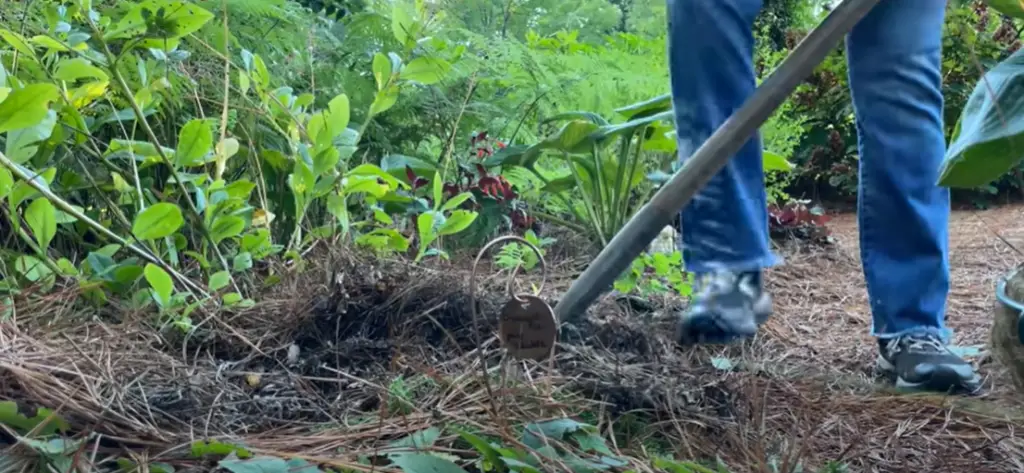
How do I keep voles away?
The best way to keep voles away is by doing a combination of trapping, repellent use, and habitat modification. Traps can be set baited with peanut butter or rolled oats, while repellents are commercial products that use scent or taste to repel the vole. In addition, you should remove any possible food sources from around your home and make sure there are no areas of dense vegetation for them to hide in. This will create an environment that is less conducive for voles and help encourage them to move elsewhere.
Finally, it is also important to regularly check your traps and dispose of any caught voles quickly. This will help discourage other voles from entering your property as they tend to follow one another. Taking these steps will help you keep your property free from voles.
What is a natural way to get rid of voles?
A natural way to get rid of voles is to use repellents, habitat modification, and trapping. Repellents are commercial products that use scent or taste to repel the vole, while habitat modification involves removing any possible food sources from around your home and making sure there are no areas of dense vegetation for them to hide in.
Traps can also be set baited with peanut butter or rolled oats. In addition to these measures, maintaining a healthy garden and lawn by regularly mowing and weeding will discourage voles from taking up residence in your yard. Finally, it is important to check your traps regularly and dispose of any caught voles quickly. Taking these steps will help you keep your property free from voles naturally.
Do coffee grounds repel voles?
Yes, coffee grounds can be used as a natural repellent for voles. The strong smell of the coffee grounds can deter voles from entering your property and prevent them from taking up residence there. In addition, the acidic nature of the grounds also helps to discourage them from burrowing in your lawn or garden. To use this method, simply spread the grounds around areas where you think voles might enter or live. You should reapply every few weeks to maintain effectiveness.
What attracts voles to your property?
Voles are attracted to properties that offer a variety of food sources and shelter. These could include gardens, lawns, compost piles, shrubs, or thick vegetation. Any areas that provide ample food and cover are likely to attract voles. Additionally, voles can be drawn to your property if you have other rodents living there as they tend to follow one another in search of food sources.
Thus, it is important to take steps to reduce the number of rodent populations around your home to discourage a vole infestation. These steps can include removing possible food sources such as pet food bowls or bird feeders, regularly mowing your lawn and weeding your garden, and keeping compost piles away from your property.
How do you permanently get rid of voles moles?
The best way to permanently get rid of voles is through a combination of trapping, repellent use, and habitat modification. Traps can be set baited with peanut butter or rolled oats, while repellents are commercial products that use scent or taste to repel the vole. In addition, you should remove any possible food sources from around your home and make sure there are no areas of dense vegetation for them to hide in. This will create an environment that is less conducive for voles and help encourage them to move elsewhere. Finally, it is also important to regularly check your traps and dispose of any caught voles quickly.
Do coffee grounds repel voles?
Yes, coffee grounds can be used as a natural repellent for voles. The strong smell of the coffee grounds can deter voles from entering your property and prevent them from taking up residence there. In addition, the acidic nature of the grounds also helps to discourage them from burrowing in your lawn or garden. To use this method, simply spread the grounds around areas where you think voles might enter or live. You should reapply every few weeks to maintain effectiveness. Additionally, it is important to take other steps to reduce vole populations on your property such as removing possible food sources, regular mowing and weeding, and keeping compost piles away from your home.

What is a voles natural enemy?
A vole’s natural enemies include snakes, weasels, hawks, owls, foxes, and cats. In addition to these predators, voles may also be affected by disease or parasites. As such, it is important to keep your property free from any possible sources of food or shelter for these predators to reduce the number of voles on your land. Additionally, maintaining a healthy garden and lawn and regularly checking your traps will help discourage voles from taking up residence.
Do Eggshells repel voles?
Yes, eggshells can be used to repel voles. The sharp edges of the eggshells act as a physical barrier and make it difficult for voles to pass through. To use this method, simply spread crushed eggshells around your property in areas where you think voles may enter or live. You should reapply every few weeks to maintain effectiveness. In addition to using eggshells, it is important to take other steps such as removing possible food sources, regular mowing and weeding, and keeping compost piles away from your home to deter vole populations on your property.
What other methods can I use to get rid of voles?
In addition to trapping and repellents, other methods used to get rid of voles include habitat modification, natural predators, and exclusion. Habitat modification involves removing possible food sources or vegetation that provides cover for the voles. This includes mowing your lawn regularly and keeping compost piles away from your property. Natural predators such as snakes, weasels, hawks, owls, foxes, and cats can also help keep vole populations in check.
Finally, vole exclusion involves sealing off any possible entry points into your home or yard with mesh or hardware cloth to prevent them from entering. By using a combination of these methods you can effectively reduce vole populations on your property and discourage them from taking up residence there.
Does human urine deter voles?
Yes, human urine can be used as a natural repellent to deter voles from entering your property. The strong scent of the urine is unpleasant for voles and encourages them to move elsewhere. To use this method, simply pour small amounts of urine around areas where you think voles might enter or live. You should reapply every few weeks to maintain effectiveness. Additionally, it is important to take other steps such as removing possible food sources, regular mowing and weeding, and keeping compost piles away from your home to reduce vole populations on your property.
What time of day are voles most active?
Voles are most active during the night and early morning hours. During this time, they will search for food and build tunnels in your lawn or garden. To reduce vole populations on your property, it is important to take other steps such as removing possible food sources and maintaining a healthy garden and lawn. Additionally, setting traps around your property can help catch any voles that may be present. By using these methods you can effectively discourage them from taking up residence there.
Useful Video: How to Remove Voles From Your Garden
Conclusion
Keeping voles out of the garden can be a challenge, but it is possible. By using deterrents, such as motion-activated sprinklers or ultrasonic repellents, and by taking steps to reduce attractive food sources and habitats for rodents, you can help keep voles from making your garden their home. Additionally, maintaining a healthy ecosystem of predators like cats, snakes, and owls can help keep the vole population in check. With proper maintenance and preventative measures in place, your garden should remain safe from these pesky little pests. The best way to ensure that voles don’t become a problem in your garden is to take proactive steps before they become an issue.
References:
- https://www.victorpest.com/articles/what-is-a-vole
- https://bonnieplants.com/blogs/garden-fundamentals/keeping-voles-out-of-the-garden
- https://smithspestmanagement.com/blog/post/how-to-get-rid-of-voles-in-your-yard-and-garden





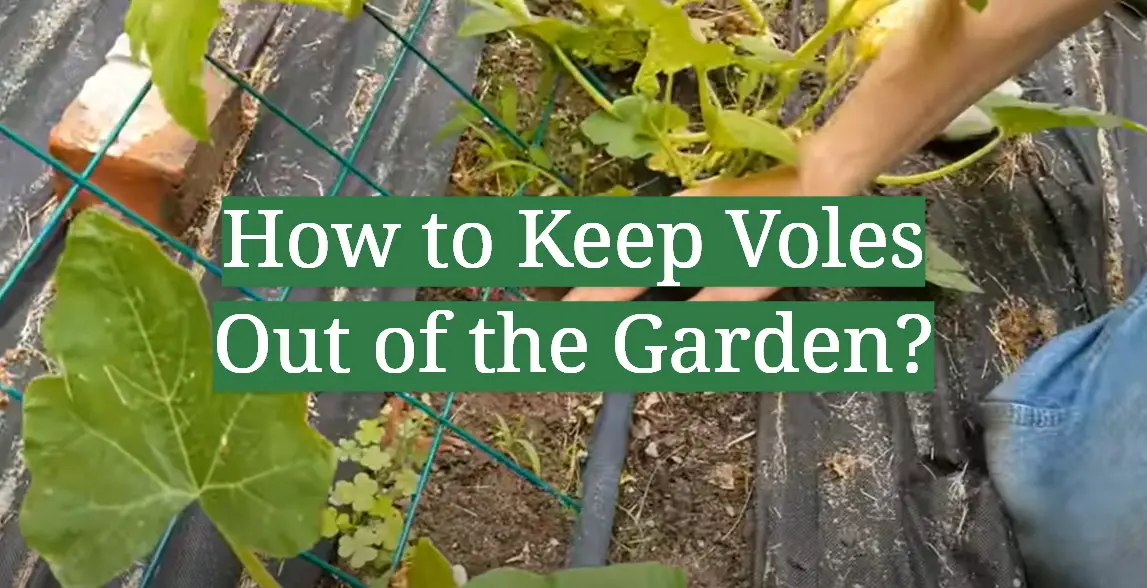




Leave a Reply
View Comments